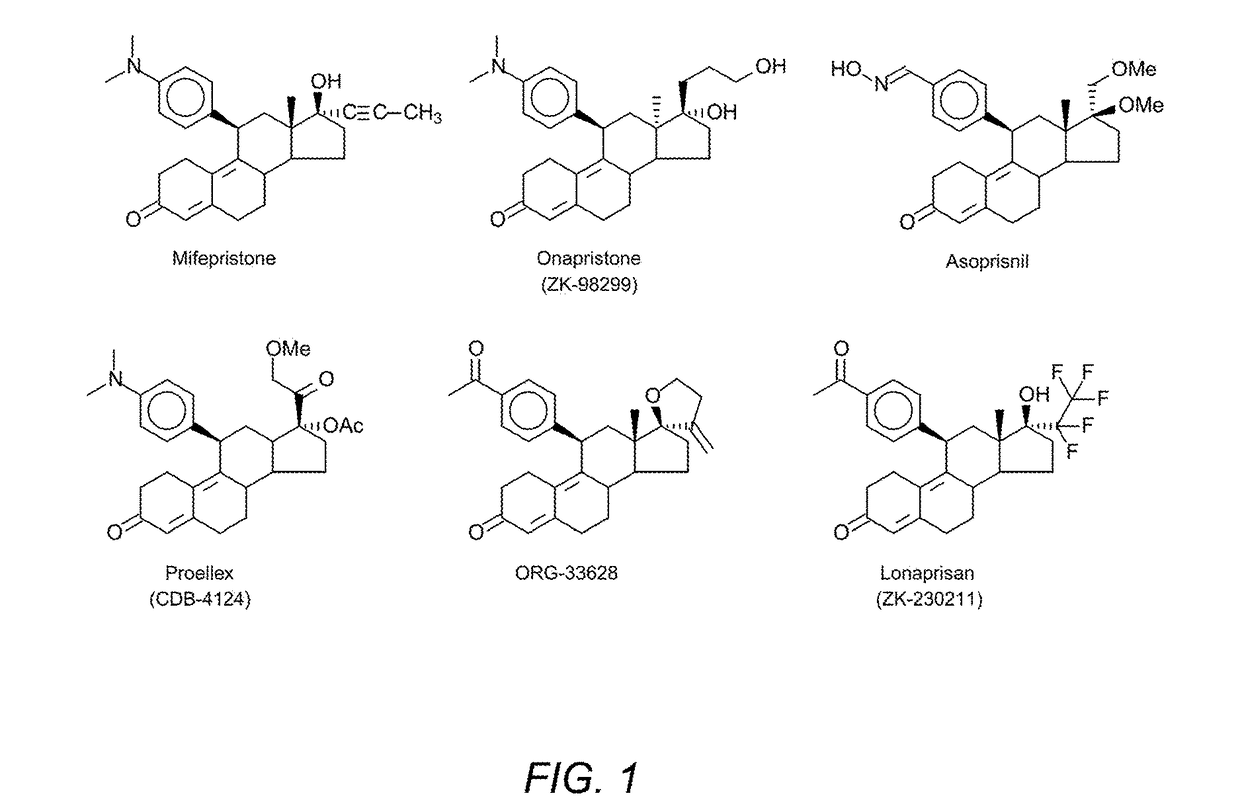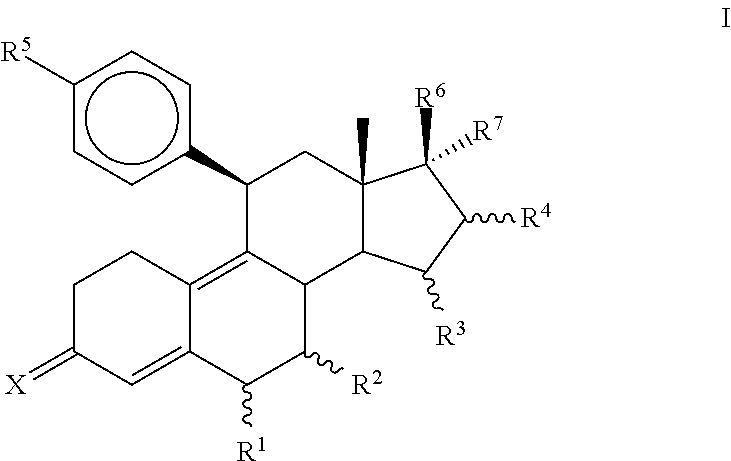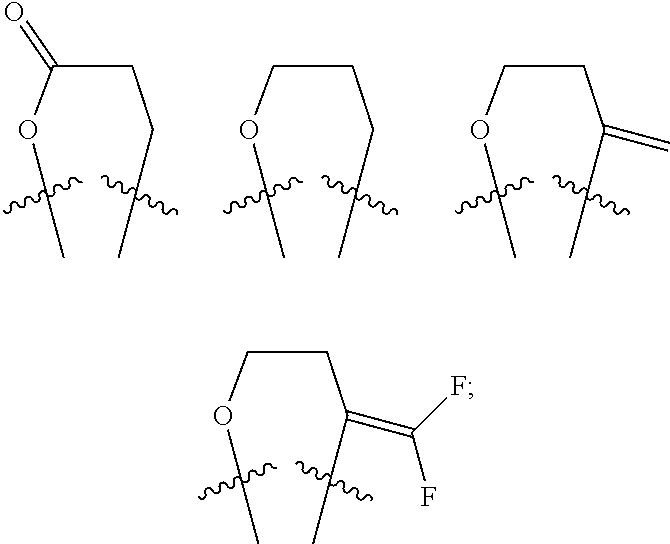Progesterone antagonists
a technology of progesterone and antagonists, applied in the field of progesterone antagonists, can solve the problem of limited long-term clinical use of the drug
- Summary
- Abstract
- Description
- Claims
- Application Information
AI Technical Summary
Benefits of technology
Problems solved by technology
Method used
Image
Examples
example 1
Nuclear Receptor Profiling
[0247]Determination of the agonist / antagonist nature of the test compounds was carried out using Invitrogen's SelectScreen™ Cell-based nuclear receptor profiling service which uses the GeneBLAzer® Beta-lactamase reporter technology. Basically this assay uses a Beta-lactamase cDNA under transcriptional control of an Upstream Activator Sequence (UAS). The UAS is activated by the GAL4 transcription factor DNA binding domain (DBD), which is expressed as a fusion protein with the target receptor ligand binding domain (LBD). Upon ligand binding, the GAL4(DBD)-NR(LDB) binds to the UAS, which controls transcription of Beta-lactamase. Beta-lactamase cleaves a special engineered fluorescent substrate which results in a change in the measured fluorescence wavelength.
[0248]The generalized protocol used for the Progesterone Antagonist Screen, activated by control Agonist R5020 is as follows:
The progesterone receptor-LBD-UAS-bla HEK 293T cells are thawed and prepared as ...
example 2
Antinidation Tests in Rat
[0251]For every compound to be screened in rats (Sprague-Daley) 3 control rats (vehicle treated, s.c.), 3 rats treated (s.c.) with a known progestin antagonist and 3 rats treated (s.c.) with the test compound (3 mg / day) are used. Female rats will be placed with male rats for 3 to 4 days and exam the vagina for sperm plugs every morning. The presence of a sperm plug will indicate day 1 of pregnancy. Pregnant rats will be treated daily with 3 mg of the screened compound at beginning on day 5 of pregnancy. At day 9 of gestation the rats will be euthanized and nidation sites counted.
CompoundsImplantation Sites*Vehicle3 / 3CDB-41240 / 3ZK982992 / 31a1 / 31b0 / 31c0 / 32a0 / 33a0 / 43b0 / 4*0 / 3 Refers to full progesterone antagonist and none of the 3 rats had any implantation sites.
example 3
In Vitro Antiproliferative Activity in Human Breast Cancer Cell Line T47D
[0252]Cells from frozen stock were expanded in T75 cell culture flasks. For the experiment, cells in the logarithmic growth phase (70% confluent) were cultivated for 3 day without estradiol and then washed with PBS, detached by trypsination and suspended in 5 ml of fresh RPMI-1640 medium. Cells were centrifuged for 5 min at 1000 rpm and the pellet was resuspended in RPMI-1640 medium.
[0253]Cells were seeded in 96-well plates with a density of 5000 cells / well / in 0.18 mL RPMI-1640 medium. Cells were allowed to attach for 24 h. Visual control for viability at 24 h and cell culture medium change. At this time point, compounds were added in 20 μl to the final concentration. After 3 days medium and compounds where changed again. Finally, 7 days after cell seeding, 20 μl MTT-solution was added to each well and 4 h later the formed tetrazolium salt was measured with a photometer.
CompoundsIC50 (nM)ZK2302110.31a171b0.641c...
PUM
| Property | Measurement | Unit |
|---|---|---|
| pH | aaaaa | aaaaa |
| temperature | aaaaa | aaaaa |
| temperature | aaaaa | aaaaa |
Abstract
Description
Claims
Application Information
 Login to View More
Login to View More - R&D
- Intellectual Property
- Life Sciences
- Materials
- Tech Scout
- Unparalleled Data Quality
- Higher Quality Content
- 60% Fewer Hallucinations
Browse by: Latest US Patents, China's latest patents, Technical Efficacy Thesaurus, Application Domain, Technology Topic, Popular Technical Reports.
© 2025 PatSnap. All rights reserved.Legal|Privacy policy|Modern Slavery Act Transparency Statement|Sitemap|About US| Contact US: help@patsnap.com



